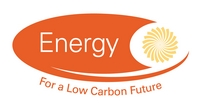Projects
Projects: Projects for Investigator |
||
| Reference Number | NIA_NGET0149 | |
| Title | Investigation of Aeolian Insulator Noise | |
| Status | Completed | |
| Energy Categories | Other Power and Storage Technologies(Electricity transmission and distribution) 100%; | |
| Research Types | Applied Research and Development 100% | |
| Science and Technology Fields | ENGINEERING AND TECHNOLOGY (Electrical and Electronic Engineering) 100% | |
| UKERC Cross Cutting Characterisation | Not Cross-cutting 100% | |
| Principal Investigator |
Project Contact No email address given National Grid Electricity Transmission |
|
| Award Type | Network Innovation Allowance | |
| Funding Source | Ofgem | |
| Start Date | 01 May 2014 | |
| End Date | 01 January 2015 | |
| Duration | 8 months | |
| Total Grant Value | £71,500 | |
| Industrial Sectors | Power | |
| Region | London | |
| Programme | Network Innovation Allowance | |
| Investigators | Principal Investigator | Project Contact , National Grid Electricity Transmission (100.000%) |
| Web Site | http://www.smarternetworks.org/project/NIA_NGET0149 |
|
| Objectives | Development of a revised type test and an associated reduction in future noise complaints The success criteria for the project will be: -There are several steps to this work and success criteria for each are given below: Report from Manchester University regarding the theory of Aeolian and resonance mechanisms in insulators Successful completion and erection of the insulator test rig Successful replication of Aeolian generated noise in controlled wind tunnel environment Update to relevant policies and procedures to define new test regime for type registration | |
| Abstract | National Grid uses a range of insulator types on its overhead line transmission network, Insulators can be made of glass, porcelain or polymeric materials, each potentially to a number of designs and specifications. In recent years there has been a preference to install glass insulators as these are readily recyclable at end-of-life. Under certain wind conditions overhead line insulator strings may resonate resulting in an audible tonal noise. This has resulted in a number of complaints in recent years, most commonly from people living near overhead line routes refurbished with glass insulators. The issue is to be fully investigated through wind tunnel testing of known "problem" and "non problem" insulators. The wind tunnel at MIRA is one of the few in the world capable of testing full scale structures and a special rig will be adapted to take heavy strings of up to 20 insulators drawn from across National Grid. The method will be to vary wind speed and insulator string angle at 0. 5° increments and listen for audible tones. Specialist noise monitoring and recording equipment will be set up to record objective results, and investigations will be carried out to determine the exact source of each tone as far a reasonably practical. Manchester University will be engaged to model the theory of Aeolian mechanisms on insulators which will support and inform the MIRA testing and also help interpret the results. The outputs of the R&D will be to devise a revised and improved testing procedure for insulators and to embed this into insulator procurement and design processes, and most importantly to feedback findings to select most appropriate solution(s) (i.e. informed insulator replacement) for existing lines with wind noise problems.Note : Project Documents may be available via the ENA Smarter Networks Portal using the Website link above | |
| Data | No related datasets |
|
| Projects | No related projects |
|
| Publications | No related publications |
|
| Added to Database | 21/08/18 | |



